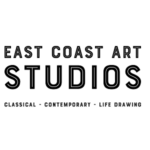Imagine working in an industry where success usually only comes after you die, and the financial benefits of your work are generally reaped not by yourself, but by people who sell it on for increasing profits after it’s out of your hands. Welcome to the world of visual arts, where most painters and sculptors in Ireland eke out a living, hoping for that big break which probably won’t come in their lifetime. The common thread running through the arts industry in Ireland, however, is that people are not motivated solely by money; creativity is something that is in their blood, and they’re generally only happy when giving full expression to it, regardless of the lack of financial reward. If you want to learn more about this area, Art Portfolio Courses are the perfect first step towards a career as an artist.
People with artistic skill can find careers using their talents in a variety of businesses, from industrial design to pottery. The field of art, craft and design is very competitive, so being successful in your arena of work can often mean combining artistic ability and business know-how. Many successful artists have to work part-time to supplement their income.
Artistic Mediums
There are a variety of disciplines within the area of art. Painting is the creation of 2D pictures; sculpture is the making of a 3D free-standing piece, and craft encompasses hand-made or mass produced objects, anything from salad bowls to embroidered clothing. Design, incorporating animation, industrial and graphic design, is usually of a more commercial nature, where the artist is paid to do a certain job by an employer, though it can involve just as much creativity as is required by a painter or sculptor.
While the basic ability to draw, paint or design is hard to teach, those thinking of entering design should study a relevant course that will teach the most up-to-date computer programs and new design techniques.
Painting
Painting is the creation of 2D pictures or illustrations. In the creation of a piece artists use a variety of mediums such as paint may be oil based watercolour, acrylic or ink, charcoal chalk or oil pastels, and combine these with numerous other rnaterials to create a finished work.
It is extremely difficult to earn a living solely as an artist. Artists are self-employed, and therefore must deal with the purchase of materials, buying or renting space, organising exhibitions, promoting work and raising finance by themselves. Many artists work part-time to supplement their income. Supplementary occupations for artists include teaching, or working as a magazine or book illustrator, portrait painter or as a fine art restorer. Becoming recognised as an artist is an ambition many never get to realise, but a good. sense of business and marketing techniques will help to increase public awareness and boost sales.
Visual Artists Ireland is the representative body for Irish artists. The organisation provides artists a newsletter published 6 times a year and provides information on tax relief competitions and grants.
Sculpture
Sculpture is the creation of a 3D piece of art, by building, carving or weaving, for example. Using a variety of materials such as stone, wood, marble, plaster, wire and paper, sculptors will create their pieces. The creations may be displayed on the street or in galleries as public works of art, outside or inside buildings, when commissioned by a company, or inside people’s homes, when privately bought.
Preparation, research and preliminary drawings on a chosen theme are completed before a small scale model of the proposed work is clone. Once all the preparatory work is finished to satisfaction the sculptor will get to work on the piece. The work can he quite physical depending on the scale of the sculpture and the materials used – which often makes a sculpture more expensive to produce than a painting.
Craftwork
The most successful areas of craftwork in Ireland are pottery, glass, knitwear, woodwork and. jewellery. But crafts such as basketry, weaving, patchwork, metalwork, leatherwork and fashion accessories also see their fair share of success.
Craftworkers who work for themselves must be talented and have a good head for business. Self-employment means looking after all pricing, marketing of goods, sales, deliveries etc. The work can he lonely, most craftworkers work by themselves or with one other person, but craft shows and exhibitions allow members of the industry to get together. Sales of crafts tend to he more seasonal than paintings, relying heavily as they do on the summer tourist market, although craftworkers are designing and producing collections, buying materials and sourcing new sales opportunities all year round. It is a competitive industry which requires hard work, commitment and self-discipline.
For many craftworkers the financial rewards from their work are just enough to get by, it is the personal rewards such as the freedom to choose where to live (no ties to a factory or office) and the personal expression that the work allows that is the biggest attraction. It is considered a way of life more than a career.
Skills and Attributes
If you want to work in this field, here are the skills you’ll need:
1. Creativity and artistic talent.
2. Hard-working and motivated.
3. Enthusiasm.
4. Self-discipline
5. Confidence in your abilities.
6. Some business acumen.
The ‘Ups’
There are some benefits to working in this field
1. Not doing the same thing everyday.
2. Allows personal creativity and self-expression.
3. Can choose to work your own hours.
4. There’s a Tax Exemption for the first 50K you earn.
5. Can choose to live where you want.
6. Friendly environment (crafts).
7. If successful, can be financially rewarding.
The ‘Downs’
1. Irregular income and lack of security.
2. Few make a living from their skills alone.
3. Art world very competitive.
4. Financial return often not equated with work involved
5. Materials expensive.
6. Suitable art studios hard to find.
Art Portfolio Courses
If you want to go to art college, you will need to present a portfolio of your work at application stage. More often than not applicants for third level courses will have a portfolio preparation course behind them before getting accepted into a degree or diploma course. PLC colleges around the country run 1 year portfolio preparation courses, with some extending for two years. Although most third level art courses teach additional skills such as word processing, it is helpful to study a business-oriented course either at night or after qualification. Artists are essentially self-employed and therefore marketing and accounting skills are very beneficial to the working artist. therefore marketing techniques and accounting skills are very beneficial to the working artist.
Portfolio Preparation
Art Portfolio Courses are the best way to compile your work with guidance. Your portfolio, as a collection of your work, reflects your style and interpretation of different media through a range of varied pieces. the work may include studies such as life drawing, portraits, photography and design work such as logos, advertisements, story boards, fashion textiles and jewellery. It is also important to use a wide range of media, from different kinds of paint (oil, watercolour, acrylic, ink) pencil sketches, oil or chalk pastel, to wood cuttings collages or a combination of media. Include all preparatory work and developmental sheets, to show your work at its various stages of development, and take photos of any work too heavy or complex to carry in your portfolio. When arranging your portfolio for inspection, neat presentation of pictures is essential, mounting onto black, white, or grey card or heavy paper is preferred. All sketch pads, notepads and scrapbooks should be labeled and when choosing pieces to put into the portfolio, do not be repetitive. Varied and imaginative work is important
Promoting your Work
1. Make slides, photographs or postcards of your work. Send them with information about yourself to galleries, speciality magazines and art agencies.
2. Show your work whenever the opportunity arises, at fairs, exhibitions. Buyers and those interested in art travel from all over the country to the regular exhibitions. If you have something in an exhibition, try and get any journalist friends to come with a photographer.
3. Enter art competitions while at college and after graduation. Competitions offer potentially wide exposure.
Pricing your Work
1. Generally, to price a piece you must take into consideration the cost of materials, rent of a studio if applicable, time spent and how many pieces you expect to sell each year. Also make note of what prices other people are getting for their work – you don’t want to price yourself out of the market, but at the same time you don’t want to seem too cheap.
2. If a gallery decides to promote your work, either permanently or once-off as part of an exhibition, you will have to pay for framing and transport of pieces. A profit-based gallery will take 30% to 50% commission of the asking price, a non-profit gallery will take less.




















